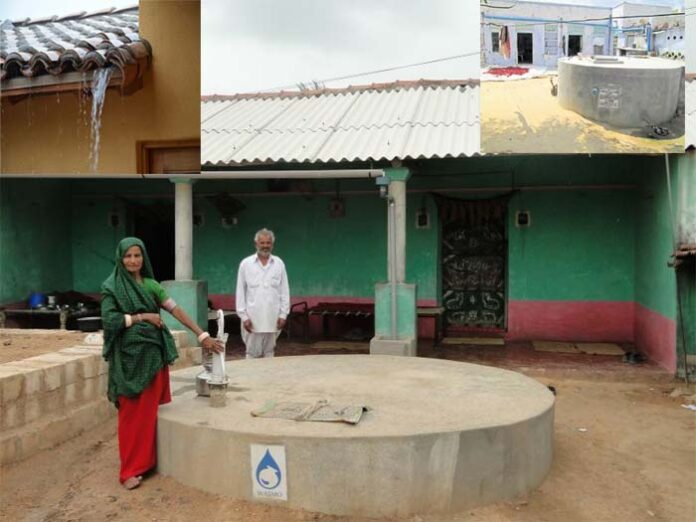- Can it augment drinking water in urban areas?
- Do the estimates exaggerate scope of the technique?
Roof water harvesting is a dreamy idea for quenching urban thirst. It must be conceived as the last resort but realistically speaking it even cannot meet a small part of the total demand for potable water in those areas. Roof water harvesting drained enormously in water research like the winning concept of check dams for agricultural crop production. They are feel good concepts catchy with civil societies and attention diverting politicians.
To be evaluated from case to case
The usefulness of the concept has to be evaluated from case to case and a blanket solution for all may not serve the purpose. It is well known that drinking water constitutes about one percent in the consumptive uses of water. Yet, the need for planning and making potable water available to parched urban areas and rural areas cannot be ignored too. Available infra structure support and the costs involved in collecting, storing and treating the rain water are not conductive for making sufficient rainwater potable. In this context it is necessary to see how the concept of roof water harvesting augers well in augmenting drinking water in urban areas.
Also Read : Neglect of agricultural labourers
Four presumptions
While making claims for rain water harvesting for drinking purposes it is presumed that 1) There is abundant and consumed precipitation forgetting the sporadic and erratic nature of rains in India. 2) The rain water can be captured from all roof tops. 3) The rain is presumed to favour roof tops and not to road ways, woods, open places etc, further 4) The per capita family availability calculations are amicable for scientific approach and need rigor.
Panacea for drinking water crisis
An interesting article published year ago points that roof water harvesting was being widely promoted as panacea for growing drinking water crisis in many under developed and developing countries and questions the physical feasibility and economic viability of roof water harvesting systems across classes and under different physical and socio-economic systems.
Also Read : Backdrop of Indian Agriculture
Little empirical work done
The fact that very little empirical work was done to actually assess the impact of roof water harvesting on water supply system still holds good and the available estimates are based in ‘back of the envelope’ calculations. These estimates aggrandize the scope of the technique and there by shun opportunity for discussions on other alternative options to meet drinking water crisis in urban areas. Coupled with poor reliability potential for local supply of the harvested rain water is very scarce in many regions. Per capita roof available in urban areas if calculated the equity question becomes alarming. There are several complexities in the economic evaluation of roof water harvesting due to lack of scientific data on inflows, run-off collection and storage efficiency, beneficiaries, value of increment benefits generated and scale considerations. In many water-scarce basins local water harvesting merely divides the hydrological benefits rather than augmenting them.
Also Read : Social Sector Investments
Blanket approach
Micro watersheds of the cities in general are devoid of seepage water due to concrete constructions, sprawling infrastructure and disappearance of water bodies, tanks and open places. High rise buildings with smaller roof top spaces add further to the problem of collection of rain drops and the economics involved in it. It is to be noted that rain water harvesting provisions are made compulsory in the construction of multi storied complexes. The new building norms these days insist on the provision of rain water harvesting pits in their respective premises. This is to be expected to recharge ground water, though excellent conceptually may be difficult proposition in hard rock regions. One has to clearly understand the hydrological tenants of water seepage, flow and upstream/downstream relations before attempting a blanket approach of rain water collection for drinking purposes in parched urban areas with receding water labels.
Also Read : Are Reforms in Higher Education Structures welcome?




